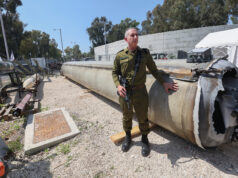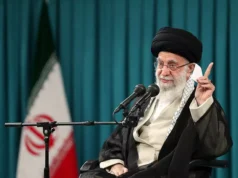Israel and Hamas reached a fragile truce last week, bringing Israel’s eight day Operation Pillar of Defense to an end. The ceasefire, brokered by Egypt and the United States, has for the most part resulted in a halt of hostilities, allowing the parties to participate in indirect talks via Egypt to carry out the second phase of the agreement: negotiating a new arrangement for the Gaza border.
Last week’s mini-war was the most serious conflict on the Gaza-Israel border since Israel’s Operation Cast Lead four years ago. During the fighting, 1,506 rockets were launched from Gaza, killing six Israelis. Unlike in past conflicts, rockets from Gaza landed near Tel Aviv and Jerusalem. The Iron Dome intercepted 421 rockets, giving it an 84 percent success rate for rockets headed toward city centers. Israeli airstrikes hit over 1,500 targets, including command centers, Hamas headquarters, weapon manufacturing and storage facilities, and long-range rocket launchers and launch sites. Over 100 Palestinians died in the conflict, including several senior members of Hamas.

Secretary of State Hillary Clinton and Egyptian Foreign Minister Mohamed Kamel Amr announce a ceasefire between Israel and Hamas in Cairo. (Photo: AP) |
The ceasefire called for an end to rocket fire from the Gaza Strip and Israeli military actions in the territory, as well as for the lessening of restrictions by Israel on the movement of goods and people through the Gaza border. During the second round of talks, occurring now, Gazan terrorists are reportedly demanding that Israel lift what remains of its blockade, while Israel wants an end to arms smuggling into Gaza. It is uncertain how, upon any agreement, Israel could be guaranteed that the smuggling of weapons would end.
While the ceasefire appears to be holding up, some hostilities occurred after it took effect. Shortly after the agreement, 5 rockets from Gaza hit Israel. In addition, on Friday a Palestinian man was shot and killed by Israeli authorities after hundreds approached the border with Israel, testing expectations that Israel was no longer enforcing its no-go zone also as a result of the ceasefire.
This most recent spurt of violence should not have come as a surprise. Israel’s operation began after days of rocket attacks from Gaza, including an anti-tank missile strike at an Israeli military jeep. Prior to the operation, in 2012 alone Gazan terrorists launched over 700 rockets at Israel. And while Israel certainly inflicted damage on Hamas and other terrorist infrastructure in Gaza, its operation likely only reached the stated goal of deterring Gaza’s terrorists — whose mission is the Jewish state’s destruction — from attacking Israel in the short-term.





